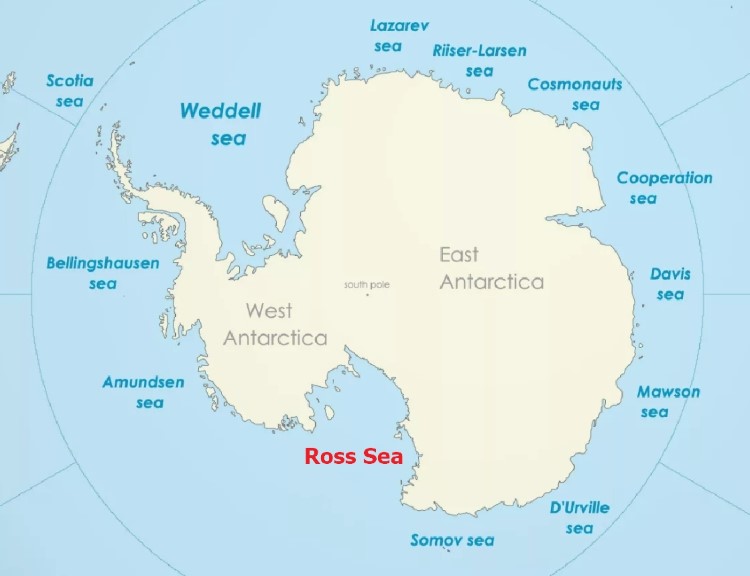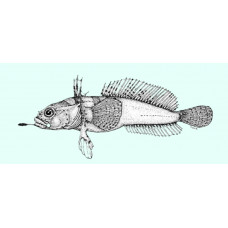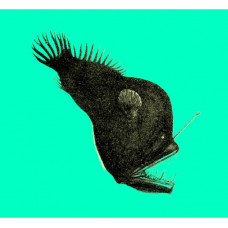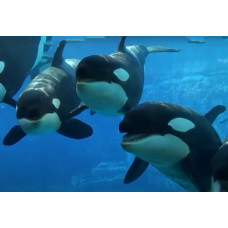Fauna of the Ross Sea
Geographical position of the Ross Sea
A marginal sea of the Pacific Ocean off the coast of West Antarctica. It extends from Cape Colbeck in the west to Cape Adair in the east, where it borders the Somov Sea. From Cape Adair to McMurdo Bay, the sea washes the coast of Victoria Land, and further to Cape Colbeck it is bounded by the Ross Ice Shelf, which breaks into the sea at a steep angle - the Ross Ice Barrier, which actually forms the southern shore of the sea, extending northwards to 70° S. The sea communicates freely with the waters of the Pacific Ocean and is the closest of all Antarctic seas to the South Pole.
Relief of the Ross Sea
The area of the sea is 440 thousand km2, the maximum depth is 2972 metres. It lies almost entirely on the shelf and is separated from the great depths by an underwater sill at a depth of 300-400 metres. The shelf surface is uneven, with ridges and depressions. The most extensive rise is Pennel Bank, to the south-west shallow water comes to the surface in the form of Franklin and Beaufort Islands. In some places the foot of the continental slope can be seen in the sea.
Climate of the Ross Sea
The prevailing winds over the sea are easterly and south-easterly. Air temperatures range from -2°C in the north to -6°C in the south near the coast in summer (December-January) and from -26°C to -36°C in winter (August). The lowest recorded air temperature is -62 °C. The surface water temperature ranges from 0.5 to -1.5 °C in February, and -1.7-1.8 °C in the subglacial layer in August.
Waters of the Ross Sea
Salinity ranges from 33.5-33.6‰ in summer to 34.0-34.5‰ in winter. Covered by drift ice most of the year, thinning in late summer. There are many icebergs. Currents form a clockwise cycle. Tides are semidiurnal, with a height of about 1m.
Inhabitants of the Ross Sea
The sea's flora and fauna are typical of the marine regions of southern Antarctica. In summer, the nutrient-rich waters provide favourable conditions for the growth of plankton, which in turn attract larger species - fish and mammals. About 10 species of mammals, 11 species of birds, 95 species of fish (seven of which are endemic) and more than 1,000 species of invertebrates live and breed in the sea. Marine mammals include Ross, Weddell, Crabeater and Leopard seals, Antarctic minke whales and killer whales. Antarctic silverfish, Brainbeard plunderfish, Melanocetus rossi, Careproctus catherinae, Careproctus inflexidens, Paraliparis macrocephalus, Artedidraco glareobarbatus, Antarctic krill and ice krill thrive in the sea. The largest Colossal squid ever caught was caught here, with a total length of about 10 metres, a mantle diameter of 3 metres and a weight of 495 kg.
Fishing in the Rosseti Sea
The toughest fishing in the world takes place in this sea. In the bitter cold and drifting ice, offshore vessels catch Antarctic toothfish. It is the largest of all south polar fish in the Antarctic marginal seas. It reaches a length of about 2 metres and a weight of up to 135 kg. It is fished by several countries under the strict control of the Commission for the Conservation of Antarctic Marine Living Resources (CCAMLR). The total quota for all countries is around 3400 tonnes. Once it has been selected, fishing for this fish is stopped. In addition, the rules in the Ross Sea do not allow transhipment, mooring or the transfer of supplies and products.
Antarctic silverfish
Latin namePleuragramma antarcticaOther nameAntarctic herringIdentificationThe body of the Antarctic ..
Artedidraco glareobarbatus
Latin nameArtedidraco glareobarbatusIdentificationThe genus is named in honour of the "father of ich..
Brainbeard plunderfish
Latin namePogonophryne cerebropogonOther namePogonophryne cerebropogonIdentificationPogonophryne - G..
Careproctus catherinae
Latin nameCareproctus catherinaeIdentificationThe body of Careproctus catherinae is elongated, gelat..
Careproctus inflexidens
Latin nameCareproctus inflexidensIdentificationCareproctus: Greek, kara = face + Greek, proktos = an..
Melanocetus rossi
Latin nameMelanocetus rossiIdentificationDistinguishing features of female: almost straight anterior..
Orca
Latin nameOrcinus orcaOther namesKiller whaleIdentificationThe Latin orca is thought to derive from ..
Paraliparis macrocephalus
Latin nameParaliparis macrocephalusIdentificationParaliparis: Greek, para = the side of + Greek, lip..
Plankton
The Greek πλανκτόν is "wandering."Plankton is a set of organisms inhabiting the water column of cont..










